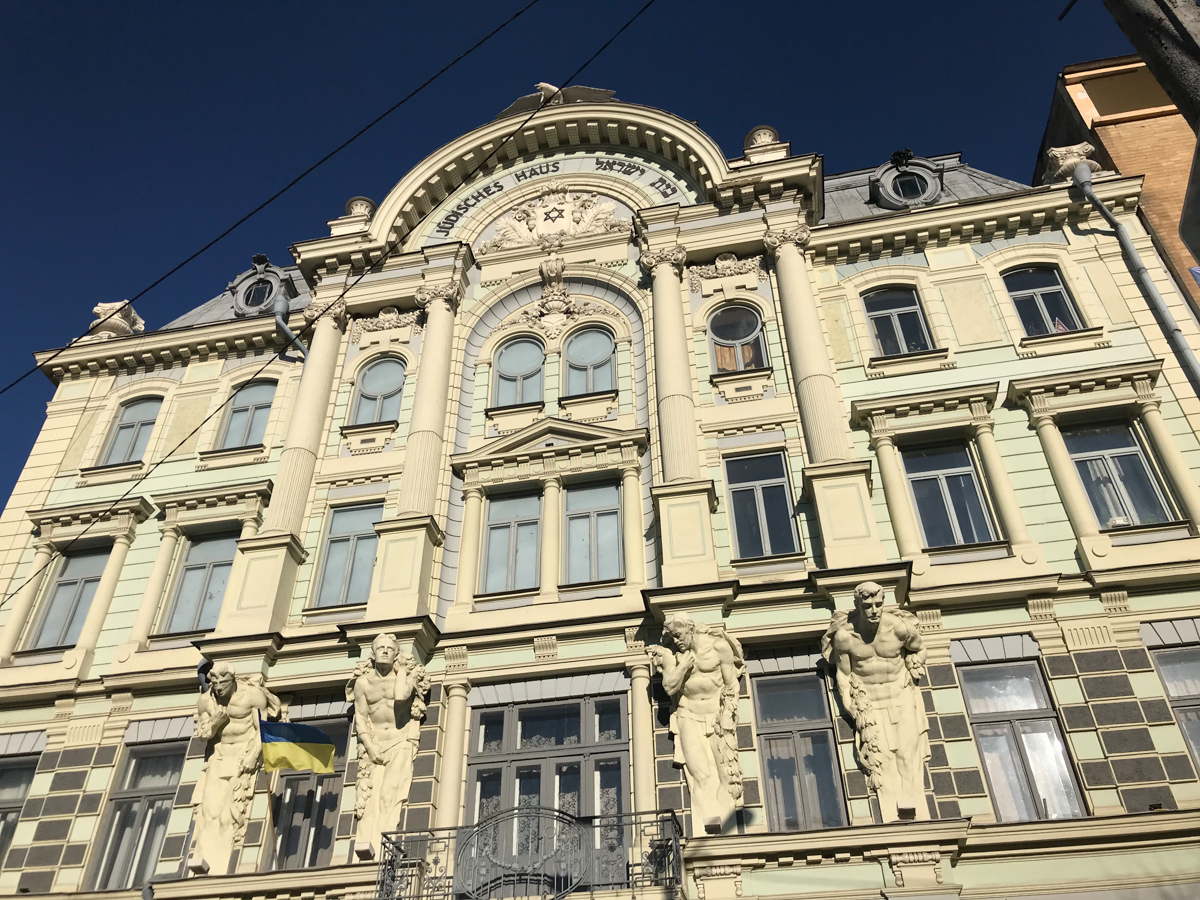The grand four-story building on Theater Square once used to be the Jewish National House. Since 2019, an inscription “Jewish House” in the upper part of the façade serves as a reminder of the buildings original purpose. The inscription and the Star of David under it had been removed in Soviet times.
After the Jewish National House was opened in 1908, the Jewish community’s main bodies and its administration were located here. It also served as a home for various Jewish organizations and associations, with a place to hold meetings and festive ceremonies for over 1,000 people.
The building’s construction was initiated and financed by the Jewish community of the town. The Head of the Jewish community, Benno Straucher, wanted visitors to know about his pivotal role: he had a bust of himself erected and placed on the ground floor. Julius Bochner, a local architect, designed the building. The sculptures of Atlas which you can still admire today were made by Karl Stürmer, a sculptor from Vienna.
At the beginning of the 20th century, there were National Houses for Romanians, Poles, Ukrainians, and Germans. In this context, the Jewish National House can be seen as manifestation of an increased Jewish national awareness.
For a decade, the Jewish National House became the center of the Community, but there were also tensions within the Jewish Community, which led to the establishment of the Toynbee Hall. In the 1920 and 1930s the building served as home for many institutions including the Association of Jewish Schools, the Jewish library, and the Rabbi’s office.
In the autumn of 1940 the Soviet authorities expropriated the House to use it as the Palace of Pioneers. The change of power in the summer of 1941, when the Romanian state regained Czernowitz, the building served as a military tribunal. After World War II a shopping center was situated here. Then, in 1955, the building became a House of Culture and it was given to a local textile combine.
After Ukraine´s proclamation of independence in 1991, local authorities gave a few rooms in the building for newly created Jewish cultural organizations, like the Social and Cultural Fund and the Eliezer Steinbarg Society of Jewish Culture. Today the building is still the town’s property.
The Central Palace of Culture holds the main part of the building. An office of the Jewish Community and the Museum of the History and Culture of Bukovinian Jews are situated on the ground floor. Here, museum visitors can immerse into the former Jewish world of Czernowitz, which has largely disappeared.
When you enter the building, take a close look at the metal railings. You will notice that the iron Stars of David had two of their points re-attached. During the Soviet era, the government ordered the points sawed off the iron Stars of David. When independence came to Ukraine, all but one of the stars were restored to symbolize the Jewish history of the building. The one was left as a reminder of Soviet destruction.
